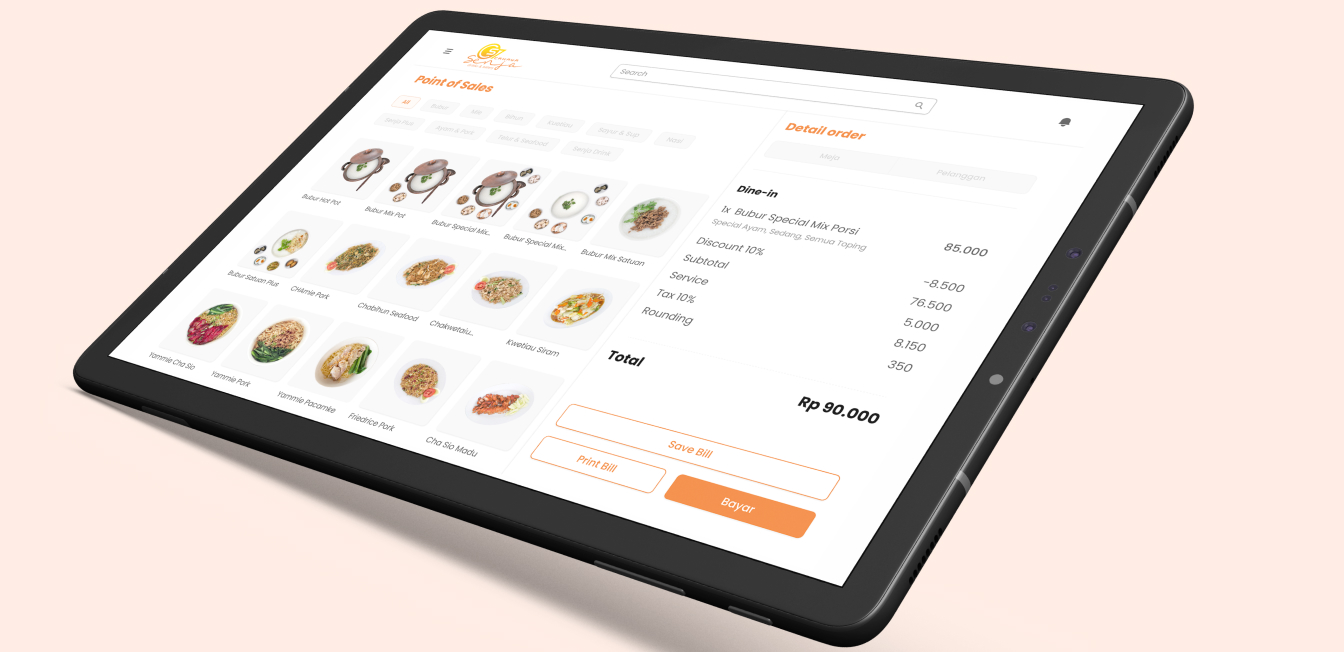

Role
Tools
Output
Collaboration
Cahaya Senja is a successful culinary company that specializes in authentic Chinese cuisine. The company attracts many visitors due to the quality of the food and beverages offered. To provide excellent service, the cafe uses a point of sale system to help cashiers record customer orders. However, the current system has many shortcomings and is not effective.
To improve the shortcomings of the current point of sale system and to open new branches through a franchise model, Cahaya Senja needs a better and more effective solution for managing and recording customer orders.
- Restaurant Owner
- Restaurant Manager
- Restaurant Cashier
Assisting Cahaya Senja to provide consistent system and procedure standards in every branch of the cafe opened, improving operational efficiency and reducing order input errors. Improving customer satisfaction by speeding up the service process, allowing customers to pay with various easy and secure payment methods. Increasing efficiency in inventory management, sales tracking, financial tracking to strengthen the overall Cahaya Senja business system.
Developing and implementing an efficient point of sale system that is in line with the Cahaya Senja brand identity to improve operational efficiency, speed up the service process, reduce order input errors, enhance customer satisfaction, support Cahaya Senja's business growth, and strengthen the overall Cahaya Senja business system.
1. Restaurant often find it difficult to process customer orders quickly and accurately, especially during peak operating hours.
2. Restaurants often find it difficult to keep track of the sales process from start to finish, especially when there are several sales
processes going on at the same time.
3. Restaurants often find it difficult to monitor employee hours effectively and efficiently.
4. Restaurant business owners often find it difficult to produce accurate and systematically structured financial statements.
The appearance of the interface in the current application is less clean the absence of the menu category feature makes the display too full and difficult to select and search the menu ordered by customers.
If there is a new order on the same customer cashier must re-enter and make a separate New Order.
When changing working hours with the next cashier, there is often a difference in the money in the cash register drawer and if no cause is found, cashier must be responsible for the shortage.
How might we make the current app interface look more attractive and easy to use to improve the efficiency of the cashier in recording customer orders?
How might we to design a more efficient app interface to allow cashiers add new orders to previous orders easily?
How might we to design an app interface that allows cashiers to enter initial cash and end with more accuracy so as to reduce the likelihood of a difference in money in the cash register drawer?
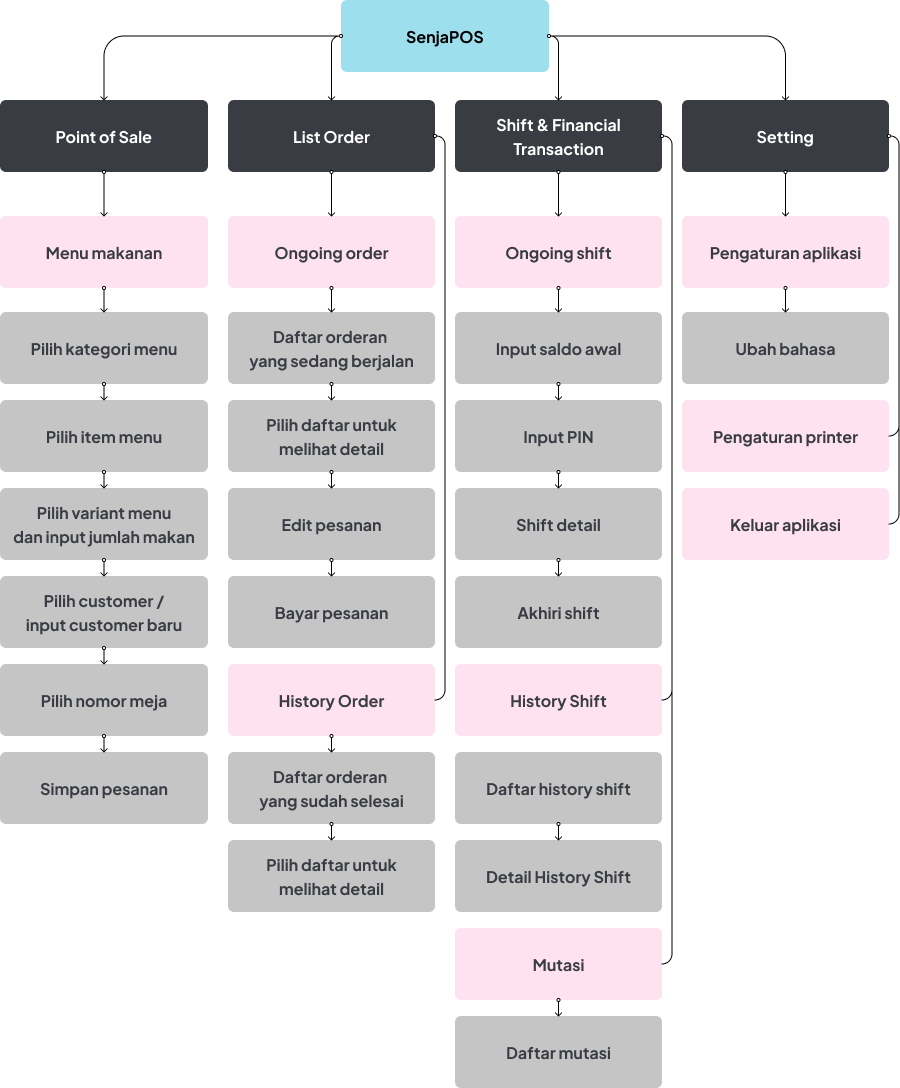
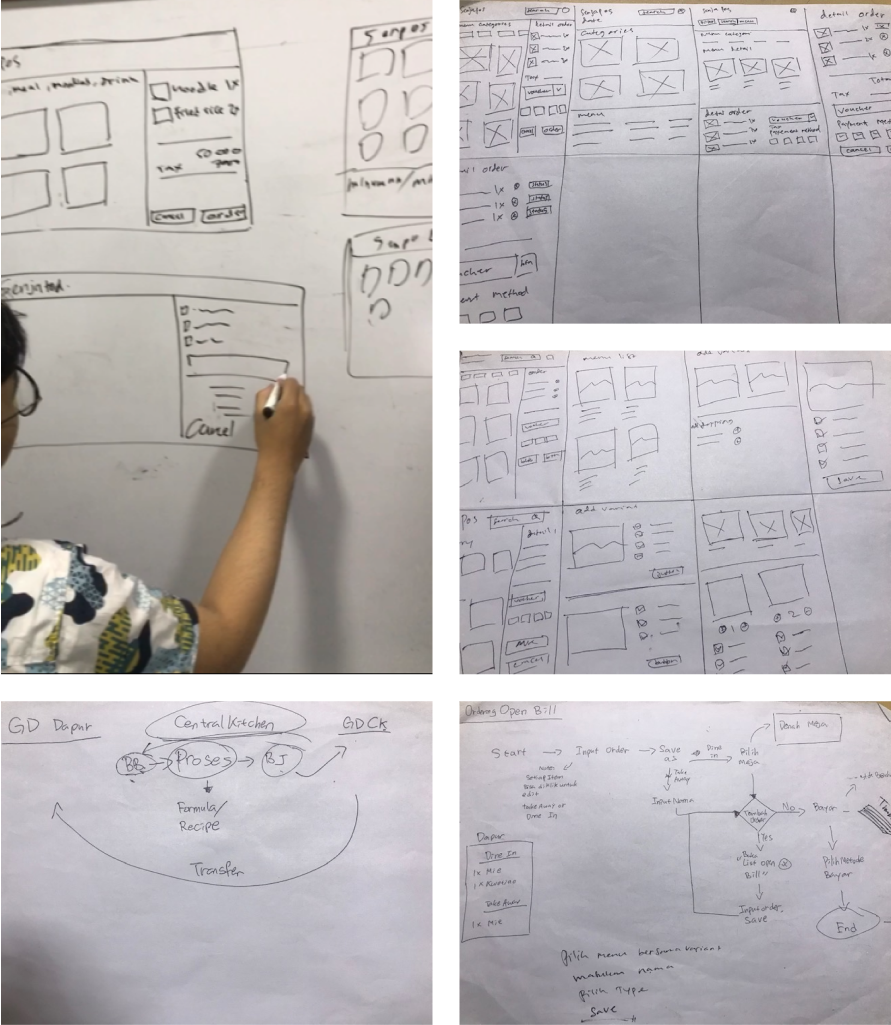
Brainstorming with stakeholders, front-end, and back-end is the key to success in creating effective and satisfying UI/UX design, as the ideas generated from each party can complement each other and ensure that every aspect of the design's appearance and functionality has been thoroughly considered.
The cashier is having difficulty in recording customer orders. The current interface display on the application is unclean, and the lack of menu category features makes the display too cluttered and difficult to choose and search for the menu ordered by the customer.
Create a clean menu page that is easy for the cashier to view and includes restaurant menu categories so that it's easy to search for customer orders to input.
The cashier is having difficulty adding a new order to the previous order. If there is a new order from the same customer, the cashier has to create a separate order with a new bill and payment.
Create a list page for ongoing orders, where the cashier can add the ordered items and save the bill. The saved orders will be added to the list, and the details of the order can be edited if needed. The cashier can also add a new order to the same bill if it has not yet been processed by the kitchen.
The cashier often encounters discrepancies between the initial and final cash amounts. When handing over the shift to the next cashier, there are often differences in the cash register, and if the cause is not found, the cashier must take responsibility for the shortage.
Create a page for inputting the initial cash before starting the sales transaction process. When starting the shift, the cashier inputs their name and a unique PIN provided by the restaurant manager. The initial cash input will be saved and will be updated in real-time if there is any incoming or outgoing cash flow.
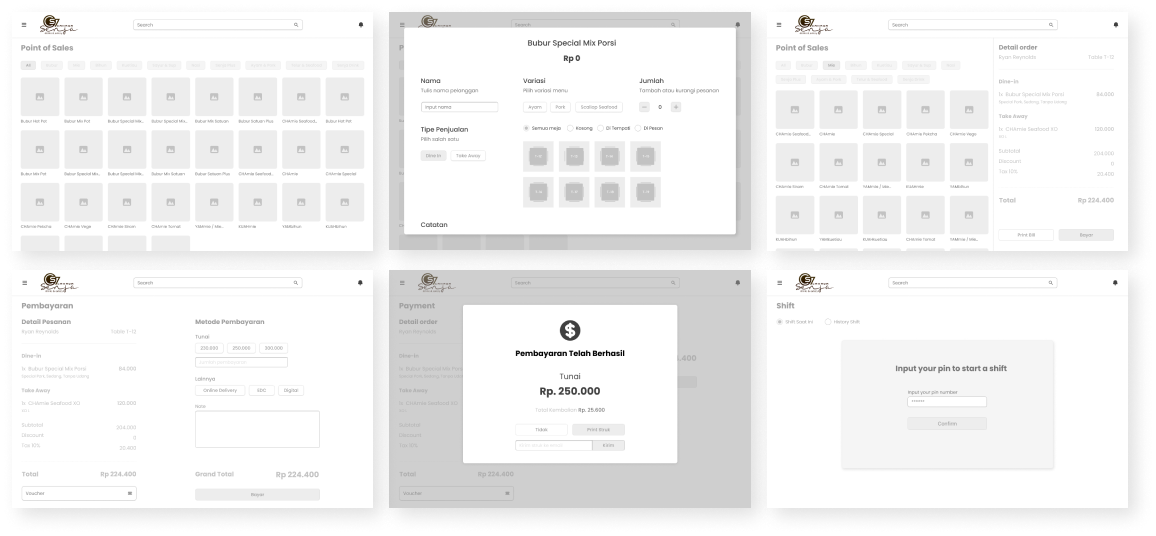
Iterating in the low-fidelity design phase makes me and my team more efficient and able to make changes quickly without being tied down to visual details that may be too complex to change in later stages. During the low-fidelity phase, I can focus more on the structure and function of the interface rather than aesthetics and visuals. As a result, iterating during this phase allows me to improve and optimize the structure and function of the interface more effectively and efficiently.
In addition, iterating at this stage can also help identify user problems and needs that may not have been detected in previous stages. Obtaining feedback from users or stakeholders through iteration at this stage can improve and refine the design before moving on to the visual design or high-fidelity stage.

The interface appears practical due to its unified layout for inputting information such as name, variations, quantity, sales type, and table. However, users feel confused about where to start and it seems overly crowded.
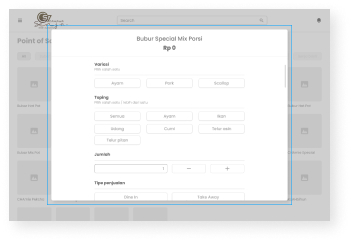
After iterating the display to be vertically downwards and sorted based on the cashier's habit in recording customer orders.
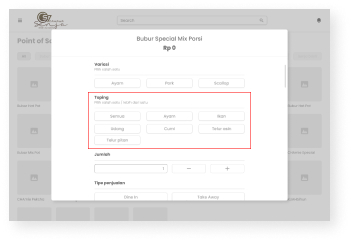
The user feels confused about the "semua" button which is designed to simplify the process of selecting all toppings without having to press each individual button. However, with the same design, there is no hierarchy, making it confusing for the cashier when they are in a hurry.
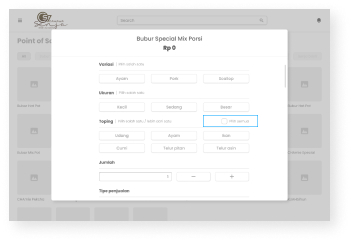
Replacing the "semua" button with a checkbox to select all toppings makes it easier for users to see because it stands out from the elements in the toppings section.
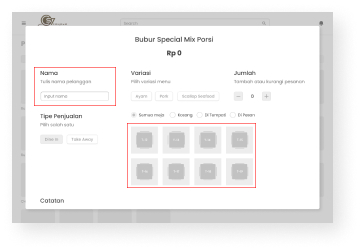
The component for writing the customer's name and table number together in one modal to select menu variations turned out to be ineffective.

In the order details, after finishing entering the ordered menu, the cashier enters the customer's name and table number through a button group component.
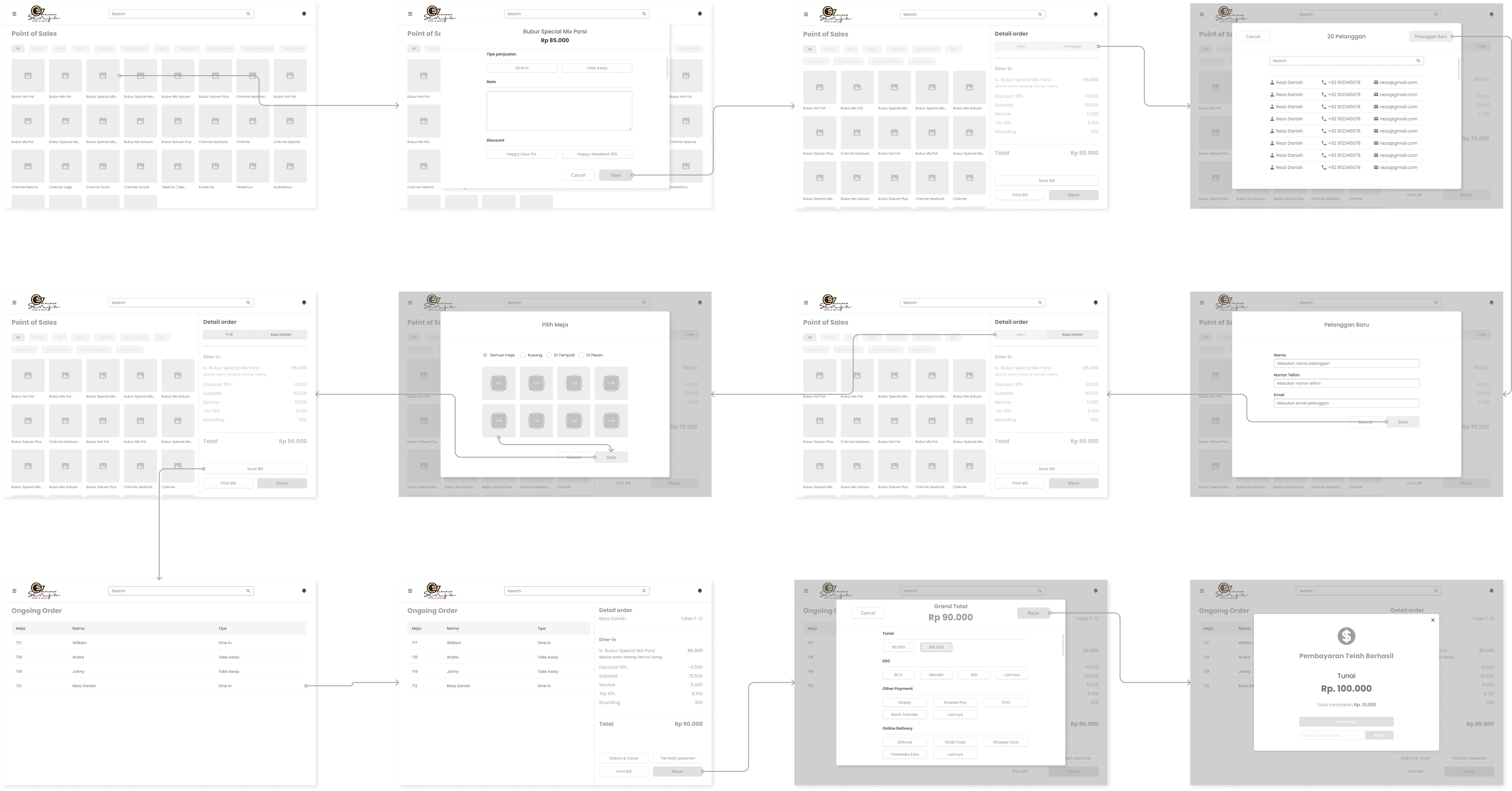
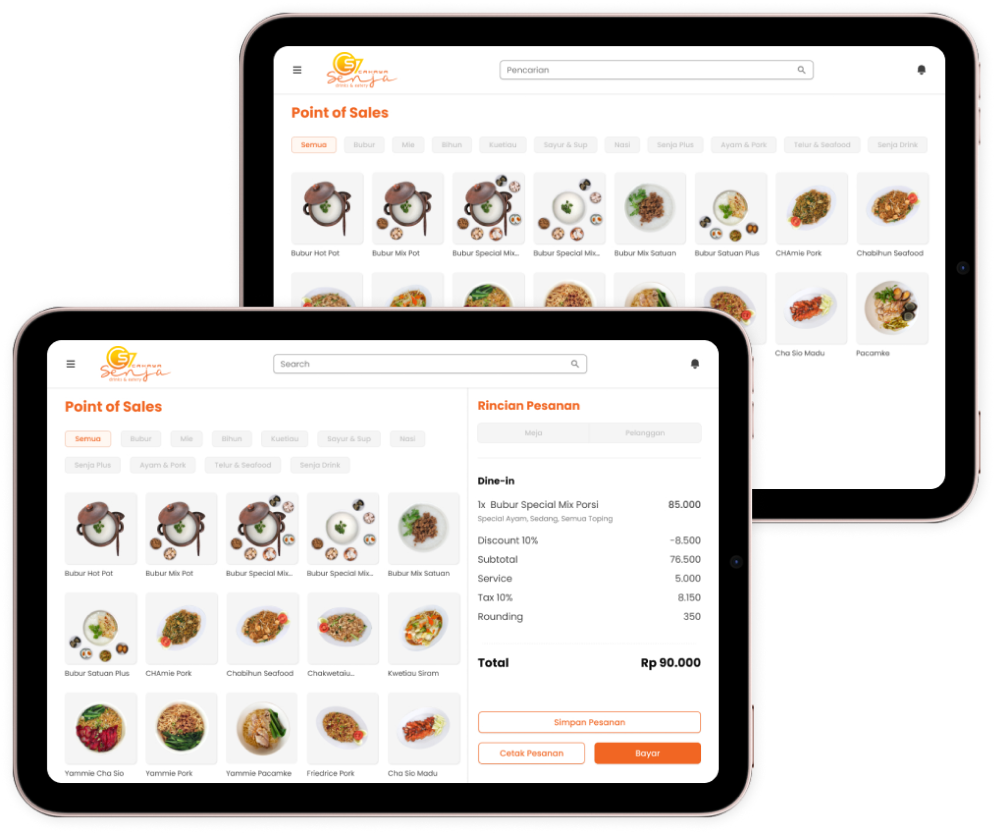
The design of the point of sale menu makes it easy for cashiers to choose customer orders.
The presence of category buttons based on the restaurant's menu categories creates a clean and easy-to-view display for cashiers, allowing them to work faster.
After the cashier has finished selecting the customer's chosen menu, they can input the customer's name. If the customer is already registered in the POS system, the cashier can simply select the customer's name from the list. If the customer is not yet registered, the cashier can select 'new customer' and an input field will appear for the cashier to input the customer's name, phone number, and email address. After that, the cashier can simply press the 'save' button to save the customer information and return to the order details.
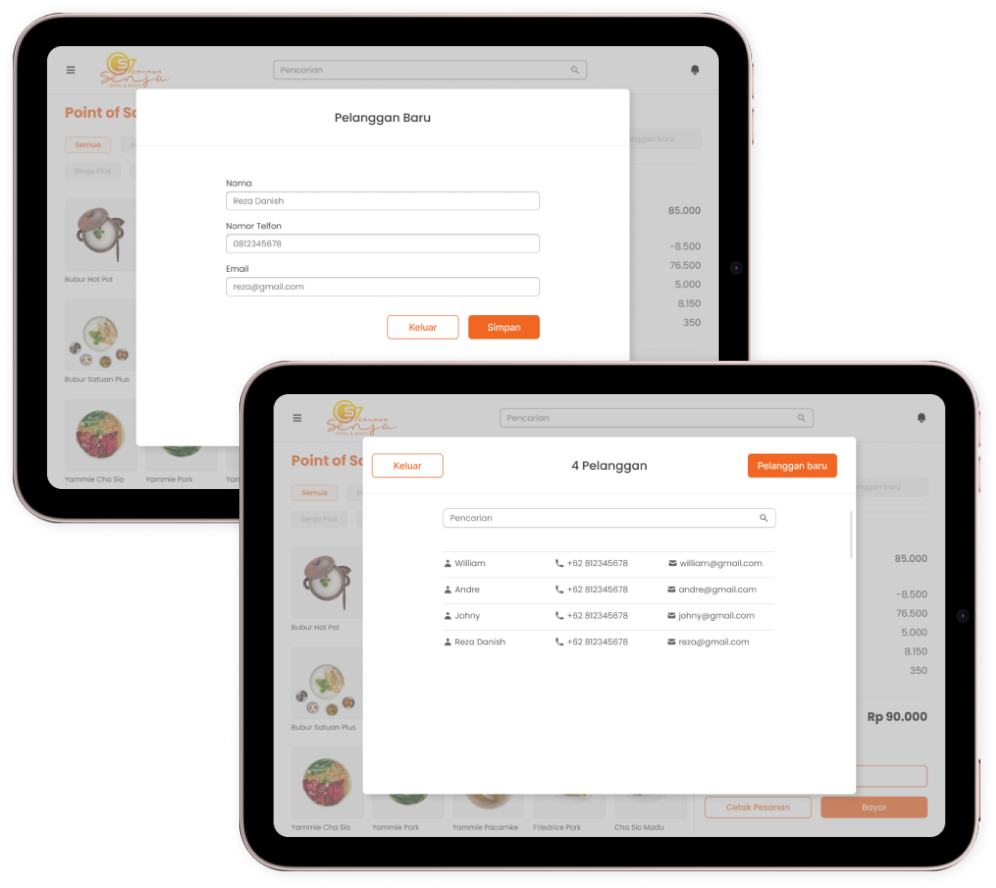
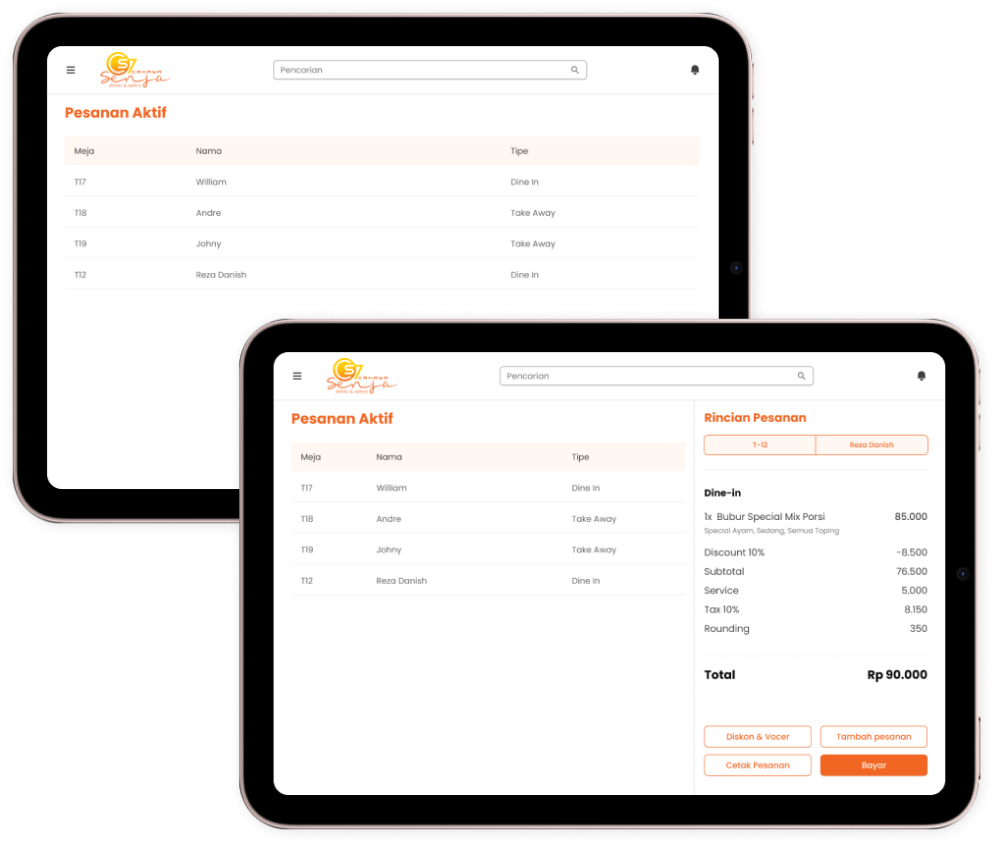
If there is an additional order from a customer whose order is already in progress, the cashier only needs to go to the active order menu and select which table's order will be added. After that, the order details will appear and the cashier can press the 'add order' button, and the restaurant's menu will be displayed on the screen.
The payment feature is made with several payment method options aimed at making it easier for customers to transaction, including cash payment, EDC, digital payment methods such as Gopay, Shopeepay, OVO, and online delivery methods such as Go Food, Shopee Food, and others.
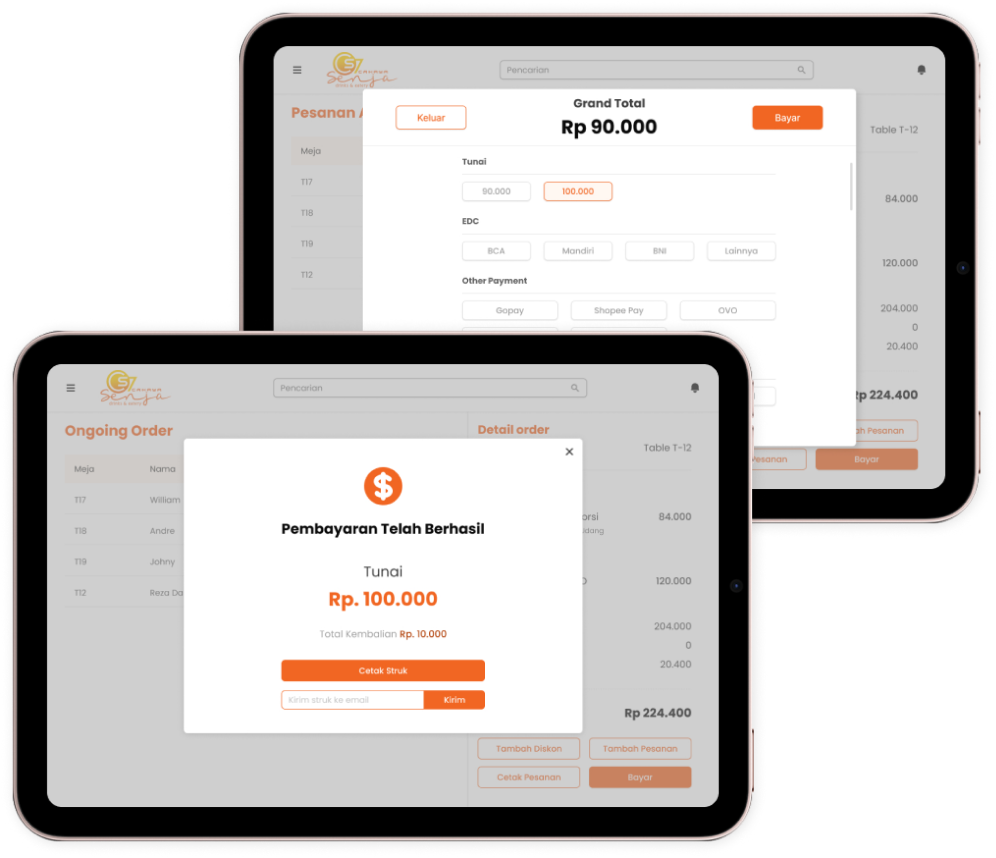

The Shift feature helps cafe owners and cashiers minimize discrepancies in cash that may occur in the cash register machine.
During the opening hours of the first shift, the cashier must enter the cash amount and enter the PIN number created by the cafe manager through the system.
After the cashier enters the cash amount and PIN, the screen will display details of the ongoing shift, including the name of the cashier on duty, start time, starting cash balance, cash out, cash in, products sold, products refunded, and types of payment accepted.
To identify and minimize discrepancies in cash between cashiers during the first and subsequent shifts, before the shift schedule change, the cashier must enter the actual balance that has been calculated on the system screen. The system will then display the final balance obtained, and when the cashier enters the actual balance, if there is any discrepancy, the system will display the amount of the difference in the cash balance.
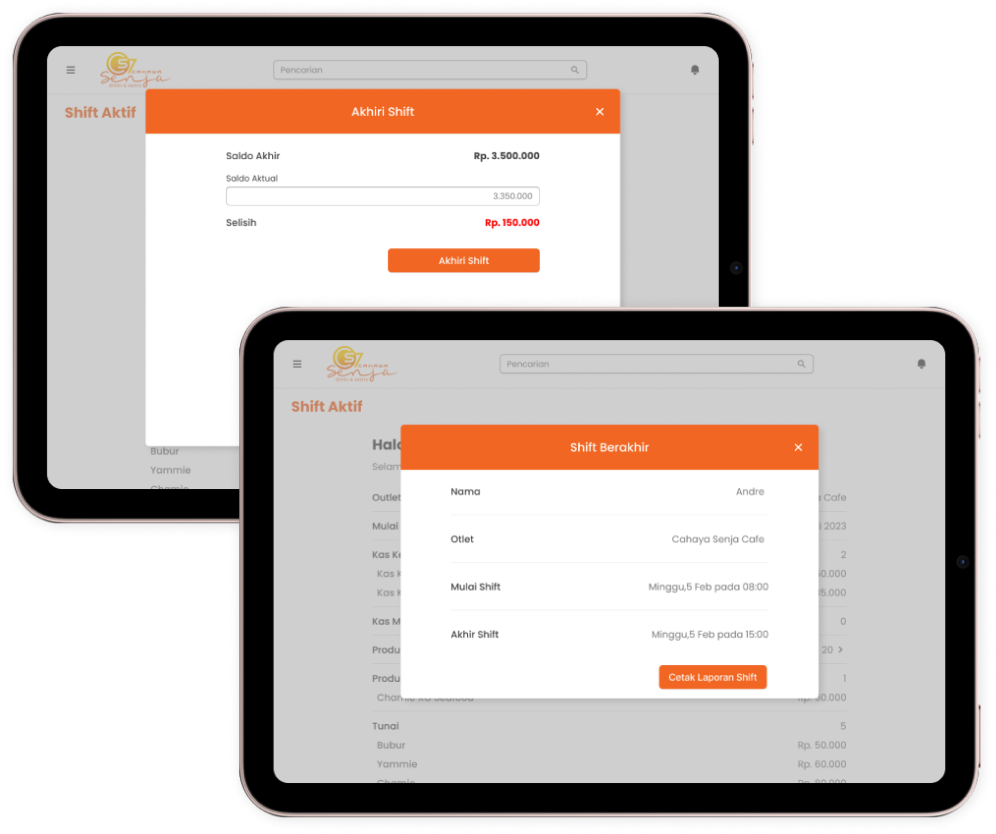
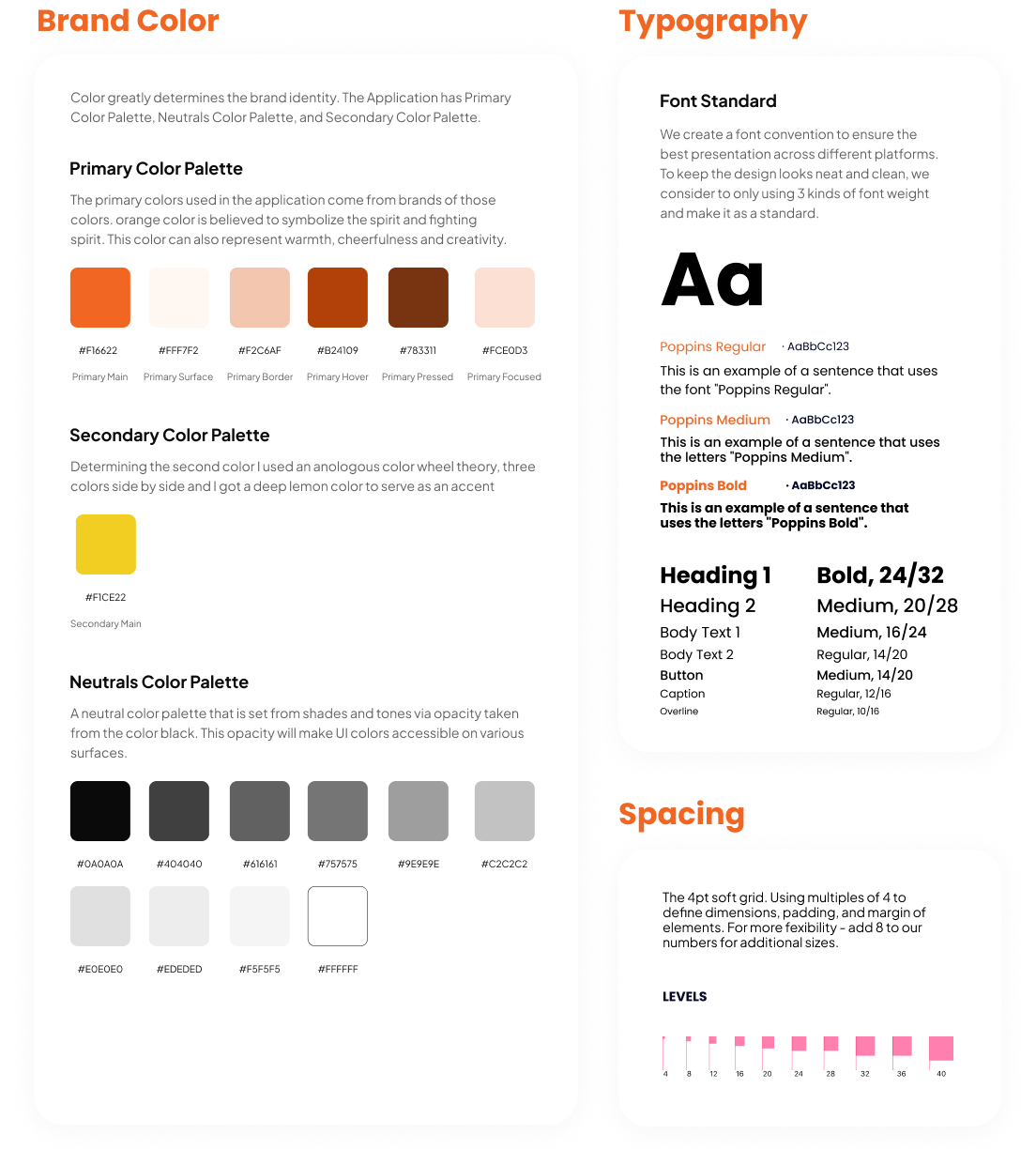
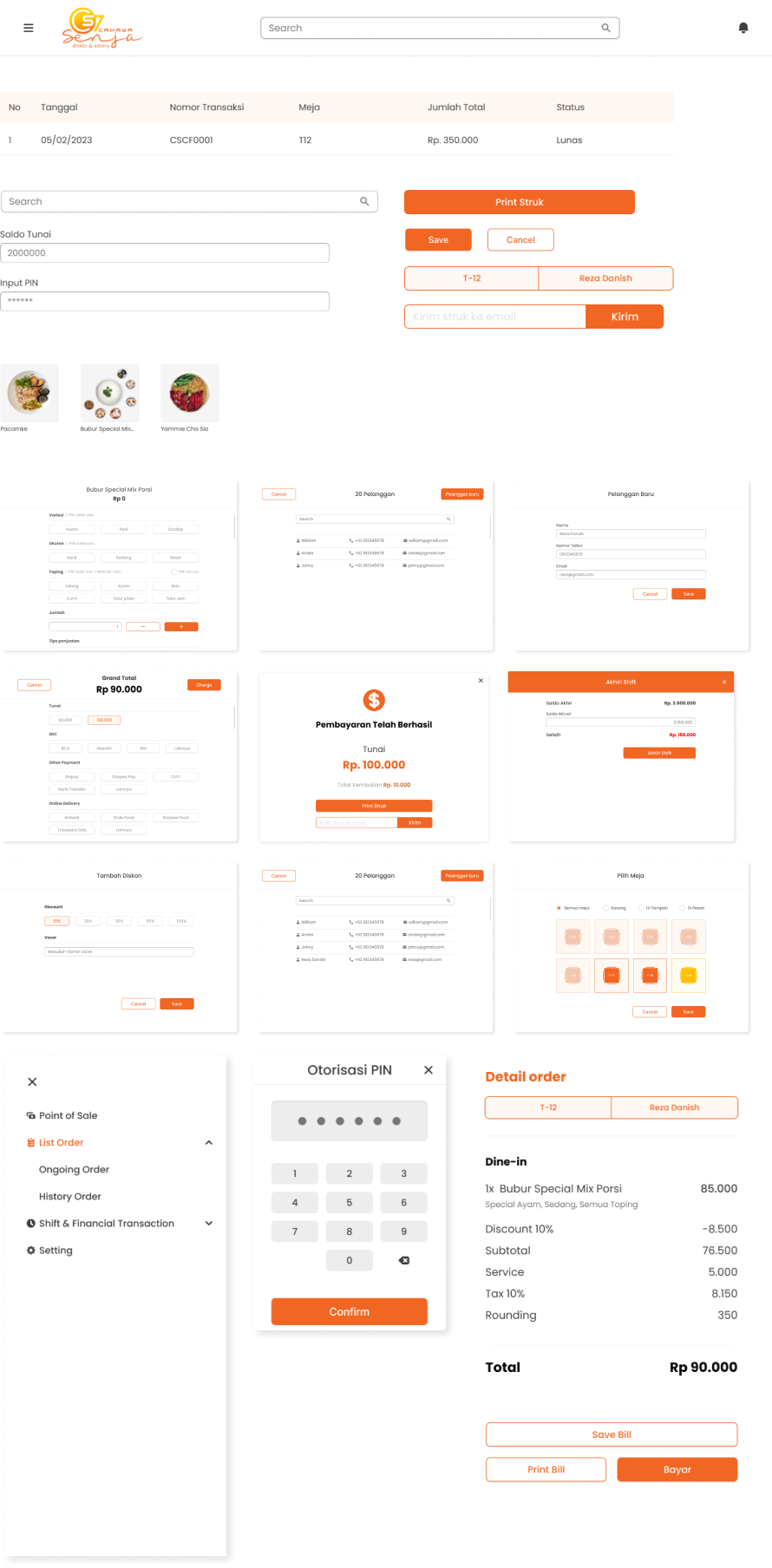
Before starting the design process, it is important to understand the needs and wants of the users, in this case the cashier, cafe manager, and cafe owner. By understanding the user's needs, the design can be tailored to provide a better user experience.
Design iteration at the low-fidelity stage helps reduce the risk of errors, as there are still many opportunities to find design problems and fix them at this stage. Thus, in the next stages, more expensive and difficult-to-fix errors can be avoided.
